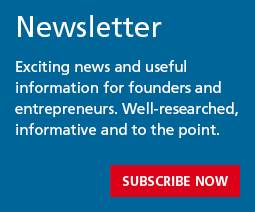Flexibility, increasingly sought after by employees, has become a key lever for companies aiming to attract and retain top talent. But how can organizations gain agility without compromising on performance? Bridging theory and practice, Stefan Planzer, founder of the Zurich-based agency Addvanto, and Gudela Grote, professor of organizational psychology at ETH Zurich, offer their guidance.

"In a field as competitive as digital marketing, introducing a four-day workweek at full pay has helped us stand out in the job market and attract high-level specialists," says Stefan Planzer, founder of the Zurich agency Addvanto. "Internally, our goal was to strengthen employee loyalty, build on the efficiency gains we saw during the more flexible COVID period, and generate positive word-of-mouth."
Like Addvanto, a growing number of Swiss SMEs are rethinking the way they work and turning to flexible models. Whether through adjusted schedules, four-day weeks, expanded remote work, hybrid setups, profit-sharing schemes, or easier internal mobility, companies have a wide range of tools at their disposal. But putting them into practice raises important questions – about employees’ search for meaning, the need to maintain performance, and the challenge of preserving cohesion. Here are five key pieces of advice for a successful transformation.
1. Start with a solid foundation
Introducing greater flexibility into a company isn’t something that can be improvised. "The organization must be in a sufficiently healthy and stable position – both economically and structurally," says Stefan Planzer. Company culture must also support the shift. "Success depends on open dialogue among all members of the organization," adds Gudela Grote, professor of organizational psychology at ETH Zurich. Limited financial leeway, structural fragility, or a culture resistant to change can all undermine the transition to flexible work models. "You need to reach a consensus that reflects the needs of individuals, teams, and the organization as a whole."
2. Choose the right model
Flexibility, by nature, comes in many forms – and the same model can mean different things in practice. A four-day workweek, for example, could involve compressing 40 hours into fewer days, working 80% of the time for full pay, or shifting to part-time. Each version has its pros and cons. "If the company operates on hourly wages, cutting hours may not be the best option," says Stefan Planzer. "The model must ultimately serve efficiency." Gudela Grote concurs: "Flexible schedules can be harder to manage in SMEs, which have less room to accommodate everyone’s preferences. But in principle, most models can be adapted to an SME context."
3. Involve the teams
"We chose a four-day week with full pay, and the team responded positively," says Stefan Planzer. Still, translating that decision into day-to-day practice isn’t always straightforward. "Flexible work should allow employees to tailor their hours and location to their own pace and needs. But if it means being expected to stay constantly available, it quickly becomes a burden," warns Gudela Grote. It’s essential that everyone involved in implementing the new model shares a clear understanding and common expectations.
4. Set clear parameters
Team buy-in is vital – but so is a clear framework. "Flexibility can backfire when there are too many options and no coordination," says Gudela Grote. Stefan Planzer encountered this first-hand: "In 2022, we initially gave teams full freedom to plan their own schedules. But that quickly led to communication overload and internal coordination issues." Recognizing the limits of this approach, he revised the setup: "After two months, we adjusted the model based on rules proposed by the teams themselves." These included shared in-office days, fixed working blocks, shared calendars, and alternating on-site duty.
5. Track results and refine
Implementing a flexible work model requires ongoing evaluation using simple, practical indicators. "It’s about assessing whether the chosen approach is effective: Are projects delivered on time? Is the budget on track? Are employees satisfied? Is absenteeism decreasing?" says Gudela Grote. At Addvanto, the team continuously adapted their approach based on results. "We had to fine-tune things along the way to ensure we stayed focused on the client," explains Stefan Planzer. The company must be ready to respond quickly and adjust course when needed. The key? A pragmatic, iterative mindset – where experimentation is followed by shared reflection and concrete adjustments.
On the theme
Don’t overlook human connection
Even when a company adopts a hybrid or remote working model, human interaction remains essential. "Face-to-face communication can’t be entirely replaced," says Gudela Grote, professor of organizational psychology at ETH Zurich. Informal exchanges play a crucial role in building team cohesion. The key is to find the right balance between physical presence and distance, in order to preserve the social bonds that help a team function at its best.
In discussion
Last modification 02.07.2025





